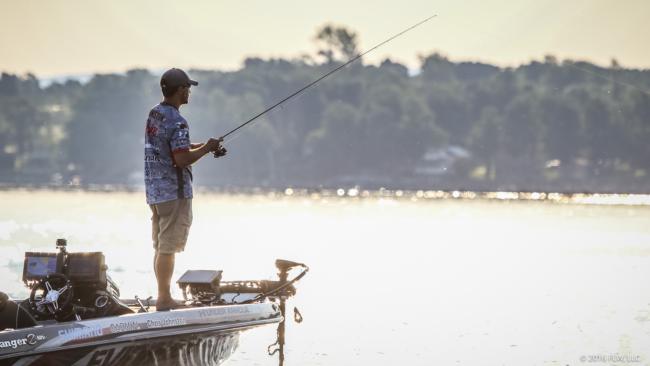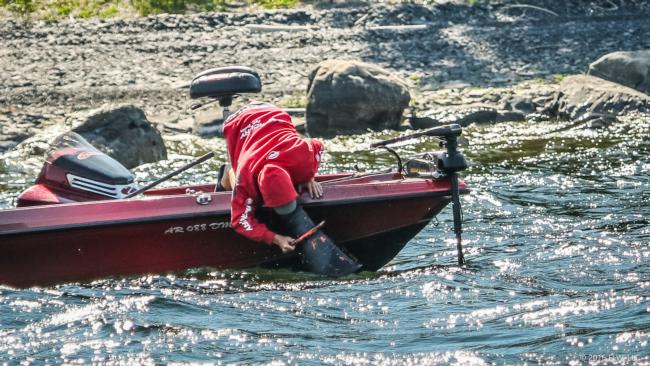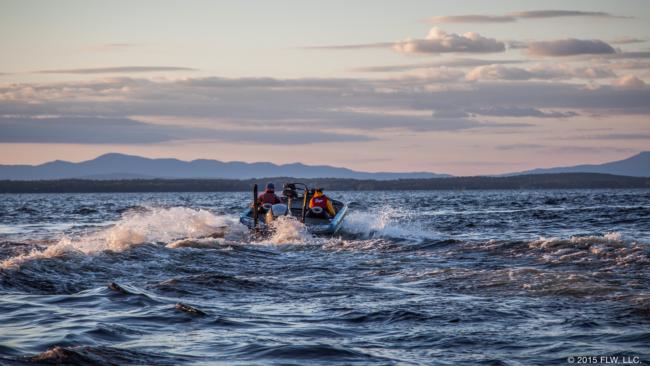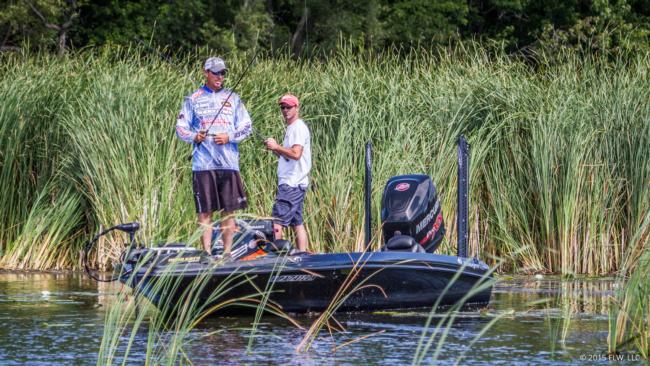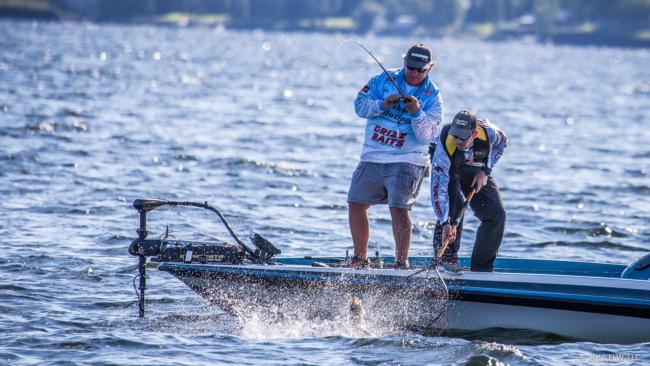A Different Champlain?
Cooler spring might produce a unique Northern Division opener
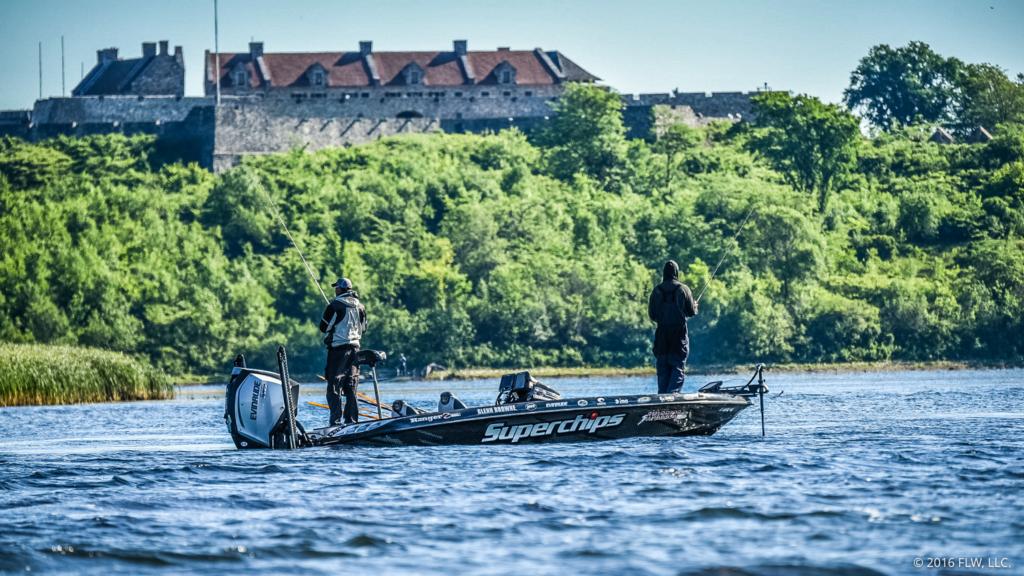
With more than 190 pros and co-anglers ready for the Costa FLW Series Northern Division to kick off on Lake Champlain, anticipation is definitely high for this week’s derby. Set in the Champlain Valley between the Adirondacks and the Green Mountains, the big Northern lake is one of the most beautiful in the country and has a reputation for some of the best fishing around. The tournament, which is presented by Power-Pole, is sure to show that off, but exactly how the fish will be caught remains to be seen.
The state of the lake
When the FLW Tour visited Champlain in 2016 the lake was extremely low, making it difficult to access areas of Missisquoi Bay and its namesake river and taking quite a bit of shallow cover out of play. Thankfully, due to a damp spring and plenty of winter snowfall, the lake is back to normal this year, so that’s one variable taken out of the equation. The main tasks that anglers face this week are to decide between the north end and the south end of the lake and figure out exactly what stage the bass are in.
A few weeks ago the lake was set to warm up and proceed along a usual spring pattern, but a string of cool nights with some extra rain has “slowed” the lake down considerably. Late June on Champlain usually hits the tail end of the spawn. In fact, last year’s FLW Tour event held June 23-26 featured tons of spawning smallmouths and a few largemouths still left on beds. Right now, it looks like a good chunk of the spawn may be yet to come.
“I think spawning smallmouths are gonna be a big player here, if we get some days you can see,” says Glenn Browne, who won on Champlain in 2015. “I don’t think the largemouths have made a big move in yet, either. I haven’t found any big groups up shallow where you can just go to whacking on them.”
Browne’s water temperature readings bear that out. Fishing around in the north end, he’s seen temperatures from the low 60s to the low 70s. Over the weekend in the middle part of Champlain, which sees the biggest winds and has the deepest water, the water temperature barely cracked 61 degrees. Now, the spawn down on the south end of the lake around Ticonderoga is assuredly almost over. The water warms faster there, and though Browne spotted a few largemouths on beds, it wasn’t anything he’d try to run in a tournament. But, just because one population is done spawning doesn’t mean there aren’t plenty on beds somewhere else in the 100-mile-long lake.
Back on June 10, Vermont angler Chris Adams caught nearly 22 pounds of smallmouths to win an ABA tournament out of Plattsburgh.
“I caught a few of them on beds, but some other ones that I caught I could see but they weren’t locked,” says Adams. “I caught some on beds and some coming up, but I don’t think any of them were going out.”
As a local, Adams keeps a good pulse on Champlain, and his report is as mixed as Browne’s is.
“The spring has been crazy. It’s been cold and rainy and then real hot, and right now I think you have fish in all stages,” explains Adams. “This is the one tournament where you could have 10 different patterns for your top 10. Usually there are two, maybe three things going on. Now it’s like anything goes.”
North or south?
Plattsburgh, where the tournament takes off, is a great place to be for access to the plentiful smallmouths in the more open areas of the north end, and it provides equally convenient access to the largemouths in the bays. The only issue is getting to the largemouths down south near Ticonderoga (Ti), which involves a 60-mile run over a lake than can get extremely rough at times.
Going south usually means you need to be on something pretty good, but despite the distance, it’s got a reputation for cranking out at least a few top-10 finishes each year (the majority in some years). Plus, plenty of wins have been based on lugging five hefty Ti largemouths back to Plattsburgh each day.
“For the top 10, I would say four will come out of the south, and six will come out of the north,” says Adams. “I think some guys will catch them in Ti, more than four on the first day, but can they do it again will be the big question mark. I think the north will be more consistent.”
Browne has won down south before, but he’s not feeling it this year.
“I don’t know what’s up with Ti,” says Browne. “I put in about eight hours there and caught three or four and had a few other bites. It’s not good, and JT [Kenney] went down there yesterday, and he said he had three. Something’s up down there. Ti is out for me.”
Of course, not many pros made the run to Ti last year in the FLW Tour event, and Jason Meninger ended up finishing second there. It’s hard to totally count out such a historically important area.
Prospective patterns
In the summer, the typical patterns on Champlain run the gamut from flipping grass and docks for largemouths to drop-shotting for smallmouths in 25 feet of water. This time of year, the focus will almost certainly be on water less than 10 feet deep, but the possible techniques are even more varied.
Spawning smallmouths will eat all kinds of finesse baits, hit a jerkbait and even blow up on a topwater. Other shallow brown fish could be caught on hair jigs, crankbaits or swimbaits. If some deeper smallmouth patterns develop, expect to see Carolina rigs, jigs and drop-shot rigs get a workout.
Largemouths on Champlain are most often found in and around the plentiful milfoil beds, but they can get comfy with other cover, too, from rock piles in the right areas to docks, laydowns, cattails and reeds. Flipping is the most common way to put a largemouth in the net, but Scott Martin caught some last year with crankbaits on the way to winning, and frogs and swimming things work great also.
Tournament details
Format: All boaters and co-anglers will compete for two days. The top 10 boaters and co-anglers based on cumulative weight after two days of competition will advance to the third and final round, with the winner determined by the heaviest cumulative three-day weight.
Takeoff Time: 6:30 a.m. ET
Takeoff Location: Plattsburgh City Marina, 5 Dock Street, Plattsburgh, NY 12901
Weigh-In Time: 2:30 p.m. ET
Weigh-In Location: Plattsburgh City Marina
